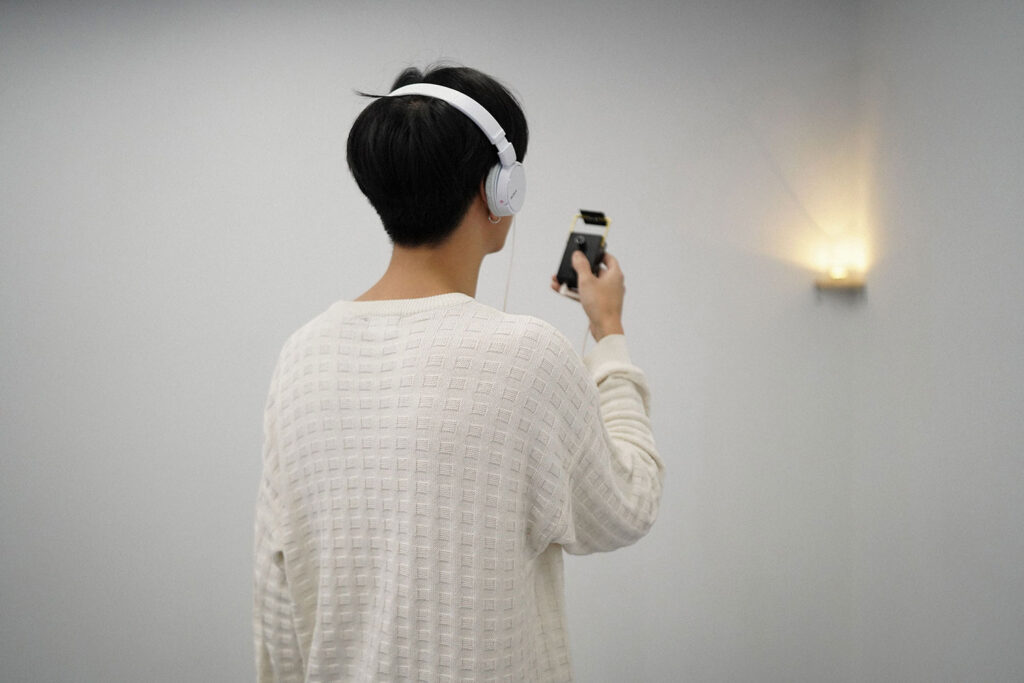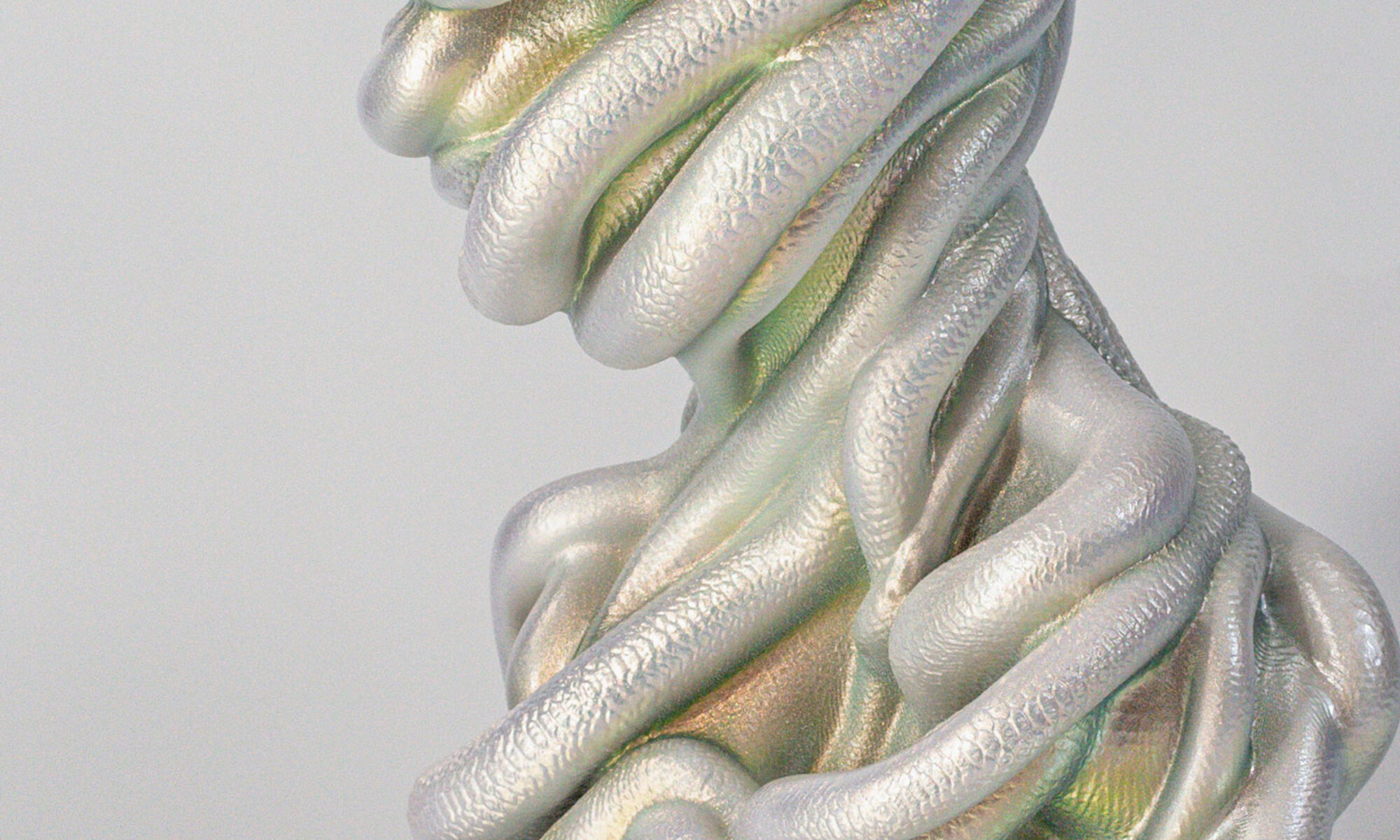Exhibition from 18 October – 1 November, 2025
Opening Saturday, October 18th at 16:00
Exhibition hours Wednesday–Saturday, 13:00–17:00
Roaring Into Being is an exhibition by 0—1 Gallery, a nomadic contemporary art platform existing since 2017. This is the third and concluding exhibition in their series ESC 2034.
Roaring Into Being looks at the convergence of the synthetic and the organic. The exhibition moves between the rumble of machines, the resonance of nature, and the shifting terrains of digital evolution. Each work reflects on humanity’s changing relationship with technology — its imprint on the environment, the body, and ways of seeing. Some works treat ecology as metaphor, others as method — erasing the divide, questioning interdependence, and tracing the fragile systems we inhabit.
Across the exhibition, technology appears not as future, but as condition — embedded, felt, and already altering what it means to be physical, connected, or alive.
With works by: Andrea Samory, Chang Hsin Yu, David Bowen, Egosito, Johannes Thiel, Lotta Stöver, Maxime Lechêne, Sophia Gatzkan

Concluding a conceptual trilogy, Roaring Into Being marks the final phase of ESC 2034 evolving study into digital futures, tracing a trajectory from subtle machine-nature interactions to a world shaped almost entirely by technology.
About 0—1 Gallery
0—1 Gallery is a contemporary nomadic curatorial platform that moves how it needs to — tech-aware, a bit restless, and always asking why. Since 2017, it has been shaped by artists who keep things in motion — not there for fixed ideas of what art is supposed to be. No walls, no permanent fixtures, stubborn curiosity, and the need to say something that matters.
Read more on: 0-1.gallery/exhibitions/esc-2034-roaring-into-being

Andrea Samory
After-images of the internet turn into icons and myths, stripped of context and rebuilt as bodies. Using 3D sculpting/printing with SFX and hand casting, screen-born ideas arrive with weight and skin. Soft sheen and clean outlines carry a bruise: growth that swerves, entropy you can touch, hubris smiling back. Small cuts of “flesh” act as beacons for empathy inside a synthetic swell. Andrea Samory tests how little figuration is needed for recognition to spark, and how virtual cues steer an old nervous system.
David Bowen
Wind draws lines, water keeps time, plants send voltages, and insects mark positions. David Bowen builds instruments that turn these cues into motion: cameras and sensors route signals to motors, and cause and effect remain readable. Projects span cloud-played piano, plant-driven machete, and a fly-guided revolver; the source leads, the mechanism follows. Technology functions as environment here, shaping what comes forward in the scene. The work is observation turned kinetic: small rules, clear chains, and the world composes directly.
Egosito
Egosito choreographs mechanics, not music — simple actuators, careful timing, sound born from contact. At the core is friction: brush, scrape, tap, and the loop tightens until the tension is audible. He pairs tenderness with hazard: soft tool against hard spines, letting wear, scuffs, and tiny failures become part of the meter. What matters isn’t volume but pressure: how close you can get before the touch turns, and how a machine holds that edge without breaking it.
Sophia Gatzkan
Looking at the body as a changing system, Sophia Gatzkan treats technology as part of its tissue. Casts, shells, and found components meet in cold, precise builds yet feel warm to the touch. Materials harden into skins; prosthetic cues become forms that question who gets to count as whole. Enhancement reads as desire and support, alongside pressure to integrate technology into the self. Writing and performance move through the practice, so ideas and objects travel together. She looks for ways to inhabit machine logic while keeping the charge of being animal.
Maxime Lechêne
Working where object design brushes sculpture, Maxime Lechêne lets function lead the form — the part says how it wants to be shaped. Industrial culture is the dictionary: machined tolerances, body panels, components that look right because they work. He maps how objects claim stripped-down urban space, how use writes itself as a trace, how desire follows utility. Lately the studies circle airflow as a collaborator — forms tuned to currents, surfaces that adjust rather than force their way through.
Johannes Thiel
Through industrial logic and algorithmic rules, Johannes Thiel builds forms that could be tools, yet they behave like bodies. Soft robotics and pneumatics move in measured cycles; pseudo-technologies stand in for working machines; they simulate function to let feeling lead. Often, he returns to closed circuits of air and water, to parts that suggest protection and access at once, to hybrids that feel independent of origin. Files, toolpaths, and assembly read as image, and acetone-smoothed skins hold a clinical shine. His prototypes age into artifacts, devices into species, design into behavior.
Lotta Stöver
Sensor rigs, code, images, and text work side by side, forming a small lab built for close attention. Data works as material, refined until the structure comes through. Lotta Stöver works with custom circuits and compact software, treating technologies as social actors and keeping prototypes open so ideas and tools evolve together. Error and reduction are part of the practice; what digitization removes becomes a link. Writing sits alongside electronics as an instrument. The work asks how tools decide what counts as natural, social, or other than human, and turns procedure into place: points become contour; then belonging follows form. Here, measurement becomes a way to be.
Chang Hsin Yu
Sound is a way to look around. It works like current and breath at once, abstract yet direct, an invisible force that sets the room. Chang Hsin Yu builds translators for it: sensors, small circuits, and code that turn motion, light, and air into tone. He studies spatiality and mechanism, how a space shapes what is heard and how a device can carry that change. Generative rules keep the system open so life can enter; randomness feels more alive than a fixed plan. City noise and studio tone meet in one field. He follows perception, lets the room find its rhythm, and listens for when a device becomes a place.

Redaction: 0—1 Gallery


